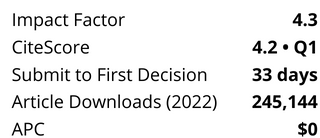The objective of this study was to evaluate the effects of the character and the removal of natural organic matter (NOM) on the formation of assimilable organic carbon (AOC) and bromate during ozone disinfection. Natural waters from two locations with different dissolved organic carbon (DOC) concentrations were tested. In addition, the DOC concentration of one of the natural waters was reduced either by ion exchange (IEX) or by granular activated carbon (GAC) filtration. The resulting four water types were tested in conventional pilot-scale ozone bubble column reactors and in a bench-scale plug flow reactor with dissolved ozone dosing. For the tested waters NOM fractions were determined with size exclusion chromatography using DOC and UVA254 detection. As expected, it was observed that for the same ozone dosages the CT is higher when NOM is removed by IEX or GAC compared to the situation without NOM removal. It is concluded that, for the waters tested, removal of the humic compounds with a molecular weight of approximately 1,000 g/mol by using IEX led to less AOC formation and less bromate formation as compared to the removal of humic compounds with a molecular weight of 300–500 g/mol by using GAC.
Skip Nav Destination
Article navigation
September 2009
This article was originally published in
Journal of Water Supply: Research and Technology-Aqua
Article Contents
Research Article|
September 01 2009
Effects of natural organic matter (NOM) character and removal on ozonation for maximizing disinfection with minimum bromate and AOC formation
A. W. C. van der Helm;
1Waternet, PO Box 8169, 1005 AD, Amsterdam, The Netherlands
2Delft University of Technology, PO Box 5048, 2600 GA, Delft, The Netherlands
Tel.: +31 6 5248 0203; E-mail: alex.van.der.helm@waternet.nl
Search for other works by this author on:
A. Grefte;
A. Grefte
2Delft University of Technology, PO Box 5048, 2600 GA, Delft, The Netherlands
Search for other works by this author on:
E. T. Baars;
E. T. Baars
1Waternet, PO Box 8169, 1005 AD, Amsterdam, The Netherlands
Search for other works by this author on:
L. C. Rietveld;
L. C. Rietveld
2Delft University of Technology, PO Box 5048, 2600 GA, Delft, The Netherlands
Search for other works by this author on:
J. C. van Dijk;
J. C. van Dijk
2Delft University of Technology, PO Box 5048, 2600 GA, Delft, The Netherlands
Search for other works by this author on:
G. L. Amy
G. L. Amy
3UNESCO-IHE Institute for Water Education, PO Box 3015, 2601 DA, Delft, The Netherlands
Search for other works by this author on:
Journal of Water Supply: Research and Technology-Aqua (2009) 58 (6): 373–385.
Article history
Received:
April 20 2007
Accepted:
June 29 2009
Citation
A. W. C. van der Helm, A. Grefte, E. T. Baars, L. C. Rietveld, J. C. van Dijk, G. L. Amy; Effects of natural organic matter (NOM) character and removal on ozonation for maximizing disinfection with minimum bromate and AOC formation. Journal of Water Supply: Research and Technology-Aqua 1 September 2009; 58 (6): 373–385. doi: https://doi.org/10.2166/aqua.2009.143
Download citation file:
Sign in
Don't already have an account? Register
Client Account
You could not be signed in. Please check your email address / username and password and try again.
Could not validate captcha. Please try again.




%20cropped.png?versionId=5947)